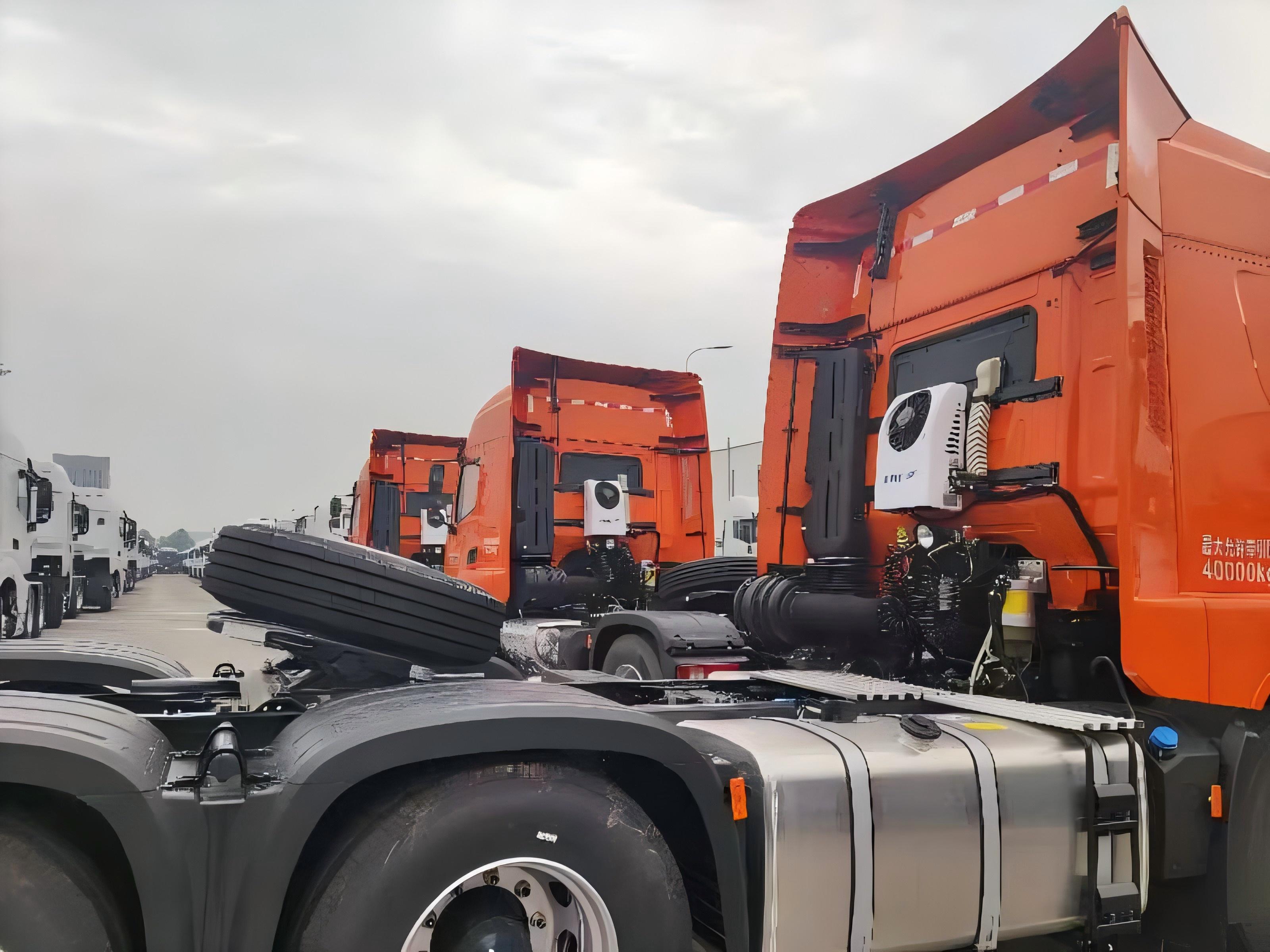In the long-distance trucking industry, semi-trailer truck drivers travel across the country year-round, relying especially heavily on their vehicle's air conditioning for a comfortable driving and resting environment during hot weather. However, air conditioning is a high-energy consumer, and its energy consumption directly impacts the vehicle's overall fuel consumption, which in turn affects operating costs. Therefore, the question of "Which semi-trailer air conditioner is more fuel-efficient?" has become a hot topic for many truck drivers and fleet managers.
Currently, mainstream semi-trailer air conditioners can be broadly categorized as split-type and integrated. This article will provide a detailed comparison of these two types, focusing on structural principles, fuel consumption, installation and maintenance, and applicable scenarios, to help you make a more informed choice.
1. Basic Definitions of Split and Integrated Air Conditioners
1.1 Split Semi-trailer Air Conditioners
A split air conditioner, as the name suggests, is an air conditioning system with a separate evaporator (interior unit) and condenser (exterior unit). Its operation is similar to that of a household split air conditioner, typically requiring certain installation techniques and structural modifications. Most split air conditioners rely on the vehicle's engine for power, while some operate from an independent power source (such as a 12V/24V battery or diesel generator).
1.2 Integrated Semi-Trailer Air Conditioners
An integrated air conditioner integrates the condenser, compressor, fan, and control unit into a compact chassis. Most are mounted on the roof or back of the cab and are plug-and-play devices, making installation easy. Many integrated air conditioners on the market use independent power systems, enabling cooling while the vehicle is parked.
2. Fuel Consumption Comparison: Which is More Fuel-Efficient?
From a fuel-saving perspective, the key factors determining an air conditioner's fuel consumption are its power source and operating time (driving/parked).
2.1 Fuel Consumption Characteristics of Split Air Conditioners
Traditional split air conditioners rely on the engine to drive the compressor, so they only operate when the engine is started. While this type of system provides good cooling while driving, it significantly increases the strain on the engine and fuel consumption. This is especially true in hot weather when the air conditioner is running while pulling a heavy load, potentially increasing fuel consumption by 2-4 liters per 100 kilometers. Independently powered split air conditioners: Some are powered by diesel generators or large-capacity batteries. While this solves the problem of parked cooling, the diesel generator itself still consumes fuel, averaging 0.4L to 0.8L per hour.
2.2 Fuel Consumption of Integrated Air Conditioners
Most integrated air conditioners are powered by batteries (lithium, lead-acid, or auxiliary batteries) and can be used while the vehicle is parked, without starting the engine or independent diesel engine.
Due to the high energy efficiency of the electric compressor and intelligent temperature control, integrated air conditioners offer low power consumption per unit time and high intermittent operation efficiency.
If combined with solar panels, the frequency of battery charging can be significantly reduced, further saving fuel costs.
Conclusion: From an overall fuel-saving perspective, integrated air conditioners are more fuel-efficient than traditional split air conditioners in the more frequently used parked cooling scenario. If engine wear is not taken into account, the combined fuel and electricity costs of integrated air conditioners can be reduced by 30%-50%.
3. Installation and Maintenance Cost Analysis
3.1 Split Air Conditioners
Installation is complex: drilling, wiring, and bracket installation are required, and some vehicles require modification of the engine and air conditioner interfaces. Frequent Maintenance: The compressor has a high failure rate, and piping is prone to aging and leaking refrigerant, requiring maintenance every 6-12 months.
High Maintenance Costs: Problems with the engine drive system can affect the operation of the entire vehicle, resulting in long maintenance cycles.
3.2 Integrated Air Conditioners
Simple and Convenient Installation: No engine modifications are required; simply secure the unit and connect it to the power source.
Modular Design: Easy troubleshooting and repair, with a short after-sales service life.
Long Maintenance Cycle: The built-in compressor is sealed and stable, resulting in low maintenance costs.
Conclusion: In terms of ease of installation and ongoing maintenance costs, integrated air conditioners are undoubtedly superior, especially for individual drivers and small fleets.
A comprehensive comparison shows that if you prioritize energy efficiency, fuel efficiency, quietness, and convenience, integrated air conditioners are the preferred choice. If you require extremely high cooling capacity and spend more time driving than parked, a split air conditioner may be a better choice.
Of course, every driver's transportation routes, operating schedules, and parking requirements are different. Before purchasing semi-trailer air conditioners, it is recommended to fully evaluate your personal needs and budget, taking into account factors such as vehicle structure and power supply configuration to make the most appropriate choice. If you need to know the recommended models, brand rankings or purchase suggestions of integrated/split air conditioners suitable for your car model, you can continue to consult us. We provide professional car air conditioning selection solutions and energy-saving optimization suggestions.
www.kmevehicleac.com
kmevehicleac
